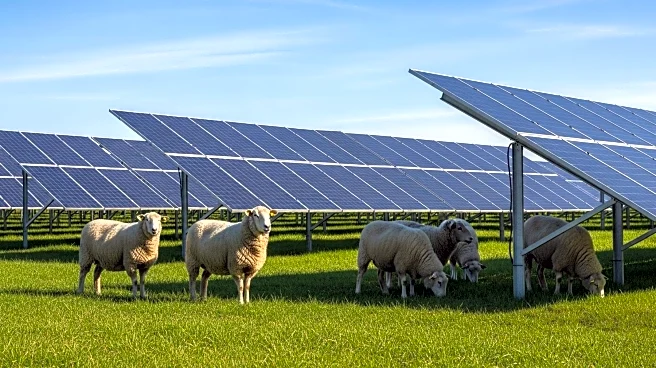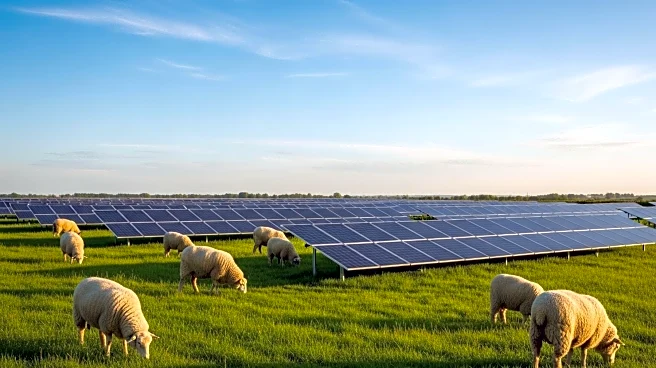What's Happening?
A multi-year trial conducted at the Wellington Solar Farm in New South Wales, Australia, has explored the concept of agrivoltaics, which combines agriculture with solar power. Researchers tracked over 1,700 Merino sheep grazing beneath solar panels and compared their wool quality to sheep on conventional pasture. The study found that sheep grazing under solar panels produced higher-quality wool, potentially due to reduced thermal stress and improved microclimate conditions. This dual-use system not only benefits animal welfare but also reduces maintenance costs and enhances biodiversity.
Why It's Important?
The findings from the agrivoltaics trial suggest significant benefits for both renewable energy and agriculture. By integrating solar panels with livestock grazing, operators can reduce vegetation management costs and fire risks while improving animal welfare and wool quality. This approach supports rural economies and promotes sustainable land use, offering a model that could be replicated globally. The trial highlights the potential for agrivoltaics to transform land use practices, balancing energy production with agricultural needs and contributing to environmental conservation.
What's Next?
While the results are promising, experts caution against a one-size-fits-all approach due to varying regional climates and agricultural practices. Further impact assessments are necessary to tailor agrivoltaics systems to specific conditions. The trial's involvement with a company linked to an oil major raises questions about transparency and oversight. As agrivoltaics gains traction, stakeholders will need to address these concerns and explore broader applications, such as pairing solar arrays with vineyards, to maximize benefits across different agricultural sectors.
Beyond the Headlines
The agrivoltaics model presents ethical and environmental implications, offering a sustainable solution to land use conflicts between agriculture and renewable energy. By fostering collaboration between these sectors, agrivoltaics can enhance biodiversity, protect water resources, and support rural communities. The trial's success in Australia could inspire similar initiatives worldwide, promoting a cleaner, greener future through innovative land management strategies.










